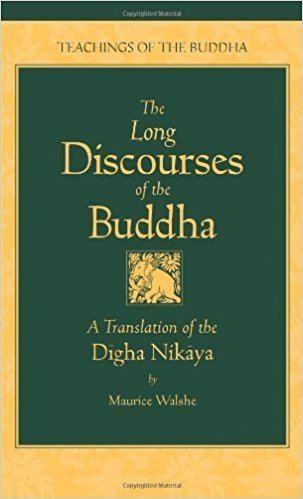 | ||
Similar Samyutta Nikaya, Majjhima Nikaya, Anguttara Nikaya, Khuddaka Nikaya, Vinaya Pitaka | ||
Digha nikaya 9 potthapada sutta states of consciousness part 2
The Digha Nikaya (dīghanikāya; "Collection of Long Discourses") is a Buddhist scripture, the first of the five nikayas, or collections, in the Sutta Pitaka, which is one of the "three baskets" that compose the Pali Tipitaka of (Theravada) Buddhism. Some of the most commonly referenced suttas from the Digha Nikaya include the Maha-parinibbana Sutta (DN 16), which described the final days and death of the Buddha, the Sigalovada Sutta (DN 31) in which the Buddha discusses ethics and practices for lay followers, and the Samaññaphala (DN 2), Brahmajala Sutta (DN 1) which describes and compares the point of view of Buddha and other ascetics in India about the universe and time (past, present, and future); and Potthapada (DN 9) Suttas, which describe the benefits and practice of samatha meditation.
Contents
- Digha nikaya 9 potthapada sutta states of consciousness part 2
- Maha samaya sutta the great meeting digha nikaya chanting
- Structure and Contents
- Correspondence with the Drgha gama
- Translations
- References
Maha samaya sutta the great meeting digha nikaya chanting
Structure and Contents
The Digha Nikaya consists of 34 discourses, broken into three groups:
Correspondence with the Dīrgha Āgama
The Digha Nikaya corresponds to the Dīrgha Āgama found in the Sutra Pitikas of various Sanskritic early Buddhists schools, fragments of which survive in Sanskrit. A complete version of the Dīrgha Āgama of the Dharmagupta school survives in Chinese translation by the name Cháng Ahánjīng 長阿含經. It contains 30 sūtras in contrast to the 34 suttas of the Theravadin Dīgha Nikāya. In addition, portions of the Sarvāstivādin school's Dīrgha Āgama survive in Sanskrit and in Tibetan translation.
Translations
Complete Translations:
Selections:
